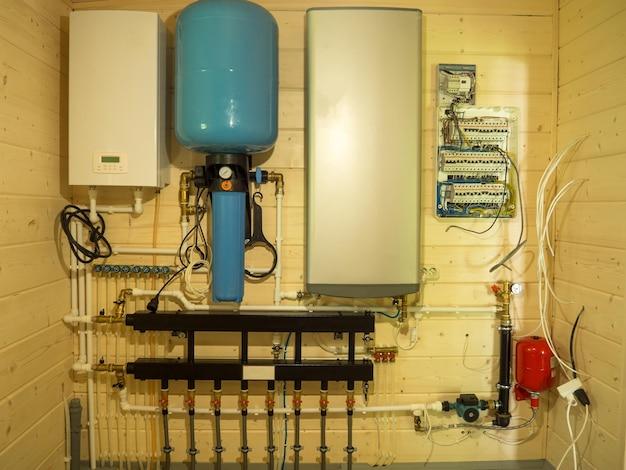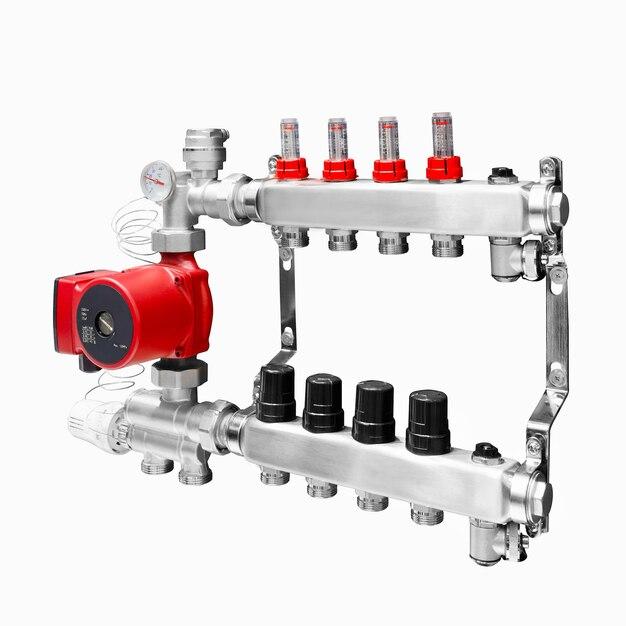Boilers play a crucial role in various industries, providing the necessary heat and power for smooth operations. But, like any other equipment, boilers also require appropriate safety measures to prevent potential hazards. One such safety feature is the explosion door. In this blog post, we will explore the importance of explosion doors in boilers and understand their role in maintaining safety.
Explosion doors are designed to relieve excess pressure that builds up inside a boiler due to a potential explosion. By providing a controlled pathway for the released pressure, these doors help prevent catastrophic accidents and avert severe damage to the boiler and surrounding equipment. They act as a safeguard, ensuring the safety of personnel and minimizing the impact of any unforeseen incidents.
Throughout this blog post, we will delve into various aspects related to boilers and their protection. We will also discuss the differences between CFBC and AFBC boilers, the necessity of safety valves, and the purpose of boiler trips, amongst other key concepts. So, let’s embark on this journey to understand explosion doors in boilers and enhance our knowledge of boiler safety.
What is an Explosion Door in a Boiler
An explosion door in a boiler is like a superhero that comes to the rescue when things get a little too hot to handle. Just imagine a door with a cape, ready to save the day! But what exactly does this door do, you ask? Well, my curious friend, let me explain.
Ensuring Safety First, Boom Later
Nobody wants a boiler explosion to turn their cozy little corner of the world into a scene from a Michael Bay movie. That’s where the explosion door steps in, or rather, swings open. It’s designed to prevent catastrophic failures by releasing excess pressure in case the boiler gets a bit too excited. Think of it as a safety valve, but with a more dramatic flair.
A Door That Packs a Punch
Now, let’s talk about the nitty-gritty of how this explosion door works its magic. When the pressure inside the boiler reaches a dangerously high level, this door springs into action. It opens up and allows the excess pressure to escape, much like a graceful escape artist slipping away from a daunting trap. By releasing the pressure, the door prevents the boiler from going kaboom and scattering debris all over the place.
Safety First, Fun Facts Second
If you’re still wondering about the specifics, here are a few fun facts about explosion doors in boilers:
-
Design Matters: Explosion doors are engineered with precision to handle the immense pressure in a boiler. They are typically made from strong materials like steel to ensure durability and effectiveness.
-
Pressure Relief: Did you know that explosion doors can release pressure at a mind-blowing speed? Some doors can open in less than a second, making sure the pressure doesn’t have time to build up and cause mayhem.
-
Bangs and Whistles: When an explosion door swings open, you might hear a loud noise or a hissing sound, just like a steam locomotive saying hello. Don’t worry, though; it’s just the door doing its job and keeping everyone safe.
In the End, Safety is No Joke
While we’ve had a bit of fun talking about explosion doors, it’s essential to remember that they play a crucial role in maintaining safety in boiler systems. These doors are no laughing matter when it comes to preventing potential disasters and ensuring the well-being of both humans and equipment.
So, the next time you pass by a boiler, take a moment to appreciate the unsung hero known as the explosion door, silently standing by, ready to save the day should things take an explosive turn. Cheers to safety and to our valiant door keepers!
FAQ: What is an Explosion Door in a Boiler
Introduction
Welcome to our FAQ-style subsection, where we’ll answer burning questions about explosion doors in boilers! Boilers, as we all know, are hot stuff. But when things heat up a little too much, an explosion door comes to the rescue. In this comprehensive guide, we’ll explore everything you need to know about explosion doors, from their purpose to their location (spoiler alert: they’re not hiding in the kitchen cabinets). So, buckle up and let’s dive right in!
What is a CFBC Boiler
When it comes to boilers, the CFBC (Circulating Fluidized Bed Combustion) reigns supreme. This innovative boiler technology uses a special bed of sand and limestone to increase combustion efficiency and reduce harmful emissions. So, next time you hear “CFBC,” know that it’s not just a random jumble of letters but a true boiler champion!
What is Boiler Protection
Boilers need some extra love and care, and that’s where boiler protection jumps into action. It involves a range of measures designed to safeguard your boiler from potential hazards like overpressure, excessive temperatures, and any other tomfoolery that could wreak havoc on your heating system. Think of boiler protection as the guardian angel watching over your precious boiler.
What is the Difference Between CFBC and AFBC Boiler
If you thought boilers were all the same, think again! CFBC and AFBC (Atmospheric Fluidized Bed Combustion) boilers may sound similar, but they have some intriguing differences. While CFBC employs high-pressure operating conditions, AFBC operates at atmospheric pressure. Additionally, CFBC boasts better efficiency and fuel flexibility, making it the fancy sibling at the boiler family reunion.
What Are the Trips Provided in the Auxiliary Boiler
Ah, the trips of the auxiliary boiler, not to be confused with a tropical vacation. These trips are not about unwinding at the beach but rather important safeguards that protect your boiler. They include low water level trip, high water level trip, flame failure trip, and a host of other protective measures. So, when it comes to your auxiliary boiler, no trips, slips, or falls are allowed!
What is the Difference Between TSV and PSV
TSV and PSV might sound like undercover agents, but in the world of boilers, they’re Safety Valves doing some serious business. TSV refers to Throttle Stop Valve, which helps regulate steam flow, while PSV stands for Pressure Safety Valve, the ultimate protector against excessive pressure buildup. They may have different roles, but together, they ensure your boiler stays safe and sound.
Why are Safety Valves Required on a Boiler
We may like to live dangerously, but boilers don’t share our thrill-seeking tendencies. Safety valves are like the unsung heroes of the boiler world, diligently combating excessive pressure. By opening up and releasing steam when the pressure goes bonkers, safety valves prevent potentially catastrophic boiler explosions. Make no mistake, safety valves are the “cool cats” that keep your boiler in check.
What is Meant by Boiler Trip
Boiler trip, not to be confused with vacation planning for your boiler, involves a sudden shutdown triggered by an abnormal condition. It’s like a “sayonara” moment for your boiler when things go awry. These triggers can include high pressure, low water level, flame failure, and a whole bunch of other unfortunate events. So, next time you hear the term “boiler trip,” remember to send your condolences.
Under Which Conditions Can Interlocks be Used in Boiler Control
Interlocks are like the referees keeping a watchful eye over your boiler’s every move. In boiler control, interlocks come into play when certain conditions must be met before specific actions can occur. For example, they may prevent starting a fuel pump unless the airflow is adequate. It’s all about maintaining order and ensuring everything runs like a well-oiled machine, or in this case, a well-heated boiler!
What is Tripping of Turbine
Turbine tripping is like the ultimate timeout for this spinning marvel. When abnormal conditions arise, such as high vibrations, low oil pressure, or sudden load rejection, the turbine gets the signal to hit the brakes. Turbine tripping safeguards the integrity of the entire system, preventing further damage and ensuring a longer lifespan for this power generating superstar.
Where is the Safety Valve on a Boiler
If you’re playing hide-and-seek with the safety valve, we’ve got you covered! Though not a master of disguise, the safety valve can usually be found mounted on the top of the boiler drum or superheater outlet header. So, next time you’re wondering where to find it, think “top of the class”!
What is an Explosion Door in a Boiler
Ah, the star of the show, the explosion door! Think of it as the escape hatch for your boiler when things get a little too explosive. The explosion door, typically located near the furnace, is designed to quickly relieve excess pressure during a potential explosion, preventing catastrophic damage. It’s like a “get out of jail free” card, but for boilers.
What is Master Fuel Trip
Master fuel trip is like the captain yelling “abandon ship!” but for the fuel supply of the boiler. When dangerous conditions arise, such as low combustion air pressure or flame failure, the master fuel trip swiftly shuts down the fuel supply. It’s a safety measure that ensures no fuel is available to feed the fire, preventing any mishaps before they start.
And there you have it! Our comprehensive FAQ-style subsection has covered everything you need to know (and more) about explosion doors in boilers. Remember, safety is key, and while boilers may be hot, they won’t explode on our watch. So, sleep tight, keep your boilers happy, and stay tuned for more captivating boiler knowledge. Stay safe and sizzle on!

